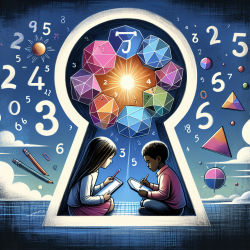As a practitioner working with children who have Specific Language Impairment (SLI), you're likely familiar with the challenges these children face in understanding complex grammatical structures. However, recent research by Adani et al. offers promising insights into how number dissimilarities can significantly improve the comprehension of relative clauses in children with Grammatical-SLI (G-SLI).
Understanding the Study
The study, titled Number dissimilarities facilitate the comprehension of relative clauses in children with (Grammatical) Specific Language Impairment*, investigates whether number dissimilarities between subject and object noun phrases (NPs) can aid in the comprehension of relative clauses. The researchers compared the performance of English-speaking children with G-SLI to that of typically developing (TD) children. The results were promising: all groups showed greater accuracy for sentences with dissimilar number features.
Key Findings
- Children with G-SLI were more accurate in comprehending subject-extracted relative clauses than object-extracted ones.
- Sentences with number dissimilarities (one singular, one plural) on the head noun and the embedded DP showed greater accuracy across all groups.
- These findings suggest that number dissimilarities can serve as a facilitative tool in the comprehension of complex grammatical structures.
Practical Applications
So, how can you implement these findings in your practice? Here are some actionable steps:
- Incorporate Number Dissimilarities: When designing therapy sessions, include exercises that use sentences with number dissimilarities. For example, use sentences like "The cat that the dogs are chasing is fast" rather than "The cat that the dog is chasing is fast."
- Focus on Subject-Extracted Clauses: Given that children with G-SLI showed better comprehension for subject-extracted relative clauses, start with these before moving on to more complex structures.
- Use Visual Aids: Visual aids can help children better understand the relationship between subjects and objects in sentences. Use pictures to illustrate sentences and their grammatical components.
- Encourage Repetition: Repetition can reinforce learning. Have children practice sentences with number dissimilarities multiple times to improve their comprehension skills.
Encouraging Further Research
While the findings are promising, further research is essential to fully understand the implications and potential applications. Encourage your colleagues to explore this area and consider participating in studies that aim to validate and expand upon these findings.
To read the original research paper, please follow this link: Number dissimilarities facilitate the comprehension of relative clauses in children with (Grammatical) Specific Language Impairment*.










